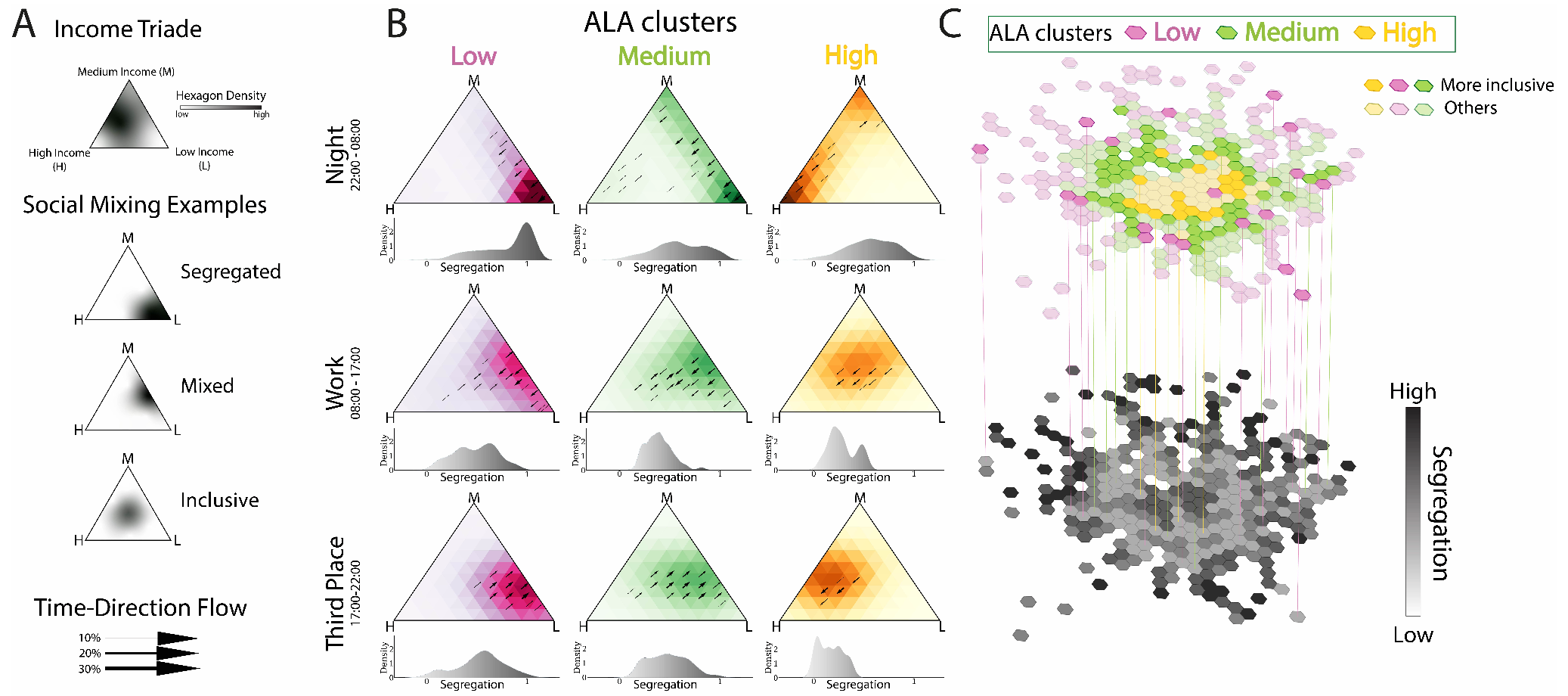Time-space dynamics of income segregation: a case study of Milan’s neighbourhoods

Traditional approaches to urban income segregation focus on static residential patterns, often failing to capture the dynamic nature of social mixing at the neighborhood level. Leveraging high-resolution location-based data from mobile phones, we capture the interplay of three different income groups (high, medium, low) based on their daily routines. We propose a three- dimensional space to analyze social mixing, which is embedded in the temporal dynamics of urban activities. This framework offers a more detailed perspective on social interactions, closely linked to the geographical features of each neighborhood. While residential areas fail to encourage social mixing in the nighttime, the working hours foster inclusion, with the city center showing a heightened level of interaction. As evening sets in, leisure areas emerge as potential facilitators for social interactions, depending on urban features such as public transport and a variety of Points Of Interest. These characteristics significantly modulate the magnitude and type of social stratification involved in social mixing, also underscoring the significance of urban design in either bridging or widening socio-economic divides.